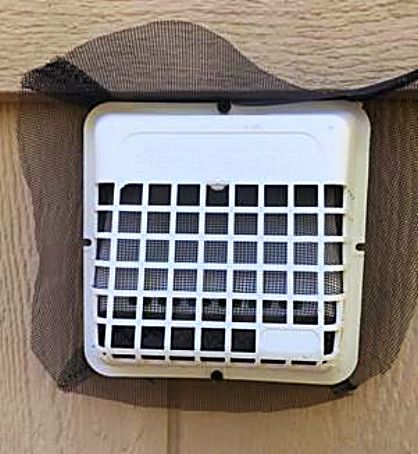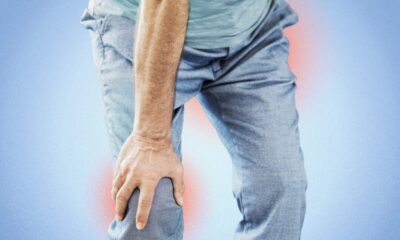Top Stories
Household Dryers Emit Over 3,500 Tons of Microplastics Annually

UPDATE: A groundbreaking study from the Desert Research Institute (DRI) reveals that household dryers across the United States are releasing over 3,500 metric tons of microfibers and microplastics annually—an alarming amount that weighs 30 times the Statue of Liberty. This urgent research, unveiled in collaboration with the League to Save Lake Tahoe, highlights a significant environmental issue that affects us all.
The findings, published recently, underscore the need for immediate action as the study shows that the hot air from dryers can disperse tiny plastic particles into the environment, exacerbating pollution. While previous studies have focused on washing machines, this new research confirms that dryers are also a critical source of microplastics.
Monica Arienzo, DRI’s director of microplastics and environmental chemistry, led the study after discovering microfibers while researching snow in remote Sierra areas five years ago. “Every time you dry your clothes, hot air is vented, and your lint filter is the only barrier stopping those fibers from escaping,” Arienzo stated. She theorized that this hot air could carry microfibers into the atmosphere, spreading them even to remote locations.
To gather data, DRI collaborated with citizen scientists from Keep Tahoe Blue, who installed mesh filters to capture the microfibers released during drying. “This study is really the first of its kind,” said Laura Patten, natural resources director at the League. The citizens involved provided invaluable data about their drying habits, significantly aiding the research.
During the study conducted in 2020, 76 dryer loads were documented, revealing that cotton was the most common fiber captured, alongside polyester and fleece. While natural fibers like cotton and fleece are biodegradable, the dyes and chemicals used in their production can still be harmful. Moreover, synthetic fabrics like polyester break down into microplastics, posing a long-term threat to ecosystems and human health.
Arienzo recommends regular disposal of lint and using mesh filters to minimize microfiber loss. “Conscious consumption does make a difference,” emphasized Marilee Movius, sustainable recreation manager. She also suggests air-drying clothes as a practical measure to reduce microfiber emissions.
This research not only sheds light on a critical pollution source but also calls for a reevaluation of clothing materials. Patten noted, “Research like this helps us better understand the different sources of microplastics pollution.” The findings may motivate manufacturers to reconsider the materials they use, and policymakers to take action similar to existing bans on single-use plastics.
The implications of this research extend beyond Lake Tahoe, as Arienzo and her team plan to investigate the effects of dryer models and usage patterns on microfiber emissions. They are also exploring the environmental impact of tire wear on microplastics, broadening the scope of their investigation into pollution sources.
“This research positions Tahoe at the forefront of microplastics studies that could benefit broader environmental policies,” Movius concluded. The DRI and the League to Save Lake Tahoe are committed to further collaborations, aiming to keep the community engaged and informed about these pressing environmental issues.
For those looking to contribute to this vital research, volunteers can sign up at the League to Save Lake Tahoe’s website. Stay tuned for more developments as this critical research continues to evolve.
-

 Business4 days ago
Business4 days agoUK to Finalize Stablecoin Regulations by 2026, Boosting Crypto Sector
-

 Business5 days ago
Business5 days agoU.S. and U.K. Target Cybercriminal Networks, Seize $15 Billion
-

 Lifestyle5 days ago
Lifestyle5 days agoKISS OF LIFE’s Natty Dazzles in Micro-Shorts at Seoul Event
-

 World4 days ago
World4 days agoMilitary Artillery Plan Sparks Safety Concerns Along California Highway
-

 World5 days ago
World5 days agoTrump Signals Reluctance to Sell Tomahawk Missiles to Ukraine
-

 Business5 days ago
Business5 days agoCalifornia to Eliminate All Plastic Bags from Stores by 2026
-

 Sports5 days ago
Sports5 days agoDomenico Doran’s Stellar Performance Leads Bishop Amat to Victory
-

 Entertainment5 days ago
Entertainment5 days agoLouisiana Senate Raises Concerns Over Medicaid Cuts Amid New Bill
-

 Entertainment5 days ago
Entertainment5 days agoUtah Communities Rally as Government Shutdown Strains Resources
-

 Sports5 days ago
Sports5 days agoTrade Low, Trade High: Key NHL Players to Consider Now
-

 Science2 days ago
Science2 days agoAncient Dinosaur Discovery in Argentina Reveals Evolutionary Insights
-

 Health2 days ago
Health2 days agoUncovering the Hidden Link Between Knee Pain and Hip Issues









